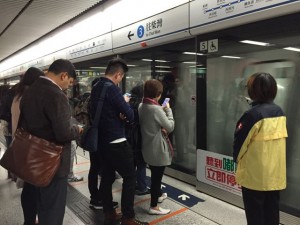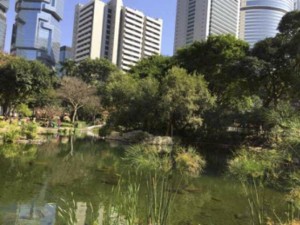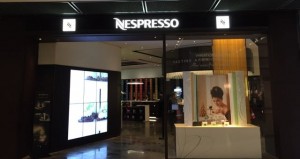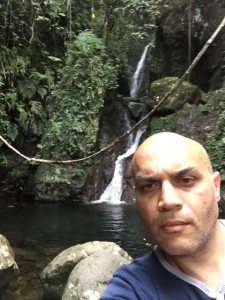It’s my fourth week of learning Cantonese. There are two schools of thought about how easy it is to learn Cantonese. There are some people (my Cantonese tutor) who say it’s easy to learn. There are others (the rest of the world) who say it’s very hard. My tutor explains: “The grammar is easy. The future tense is the same as the present tense so no need to learn different verb endings.” That’s nice to hear but there is a good reason why English has the future tense; it’s actually quite useful being able to tell her whether I have done my homework or will do my homework.
And then there are the tones. To give you some idea about their perverseness listen to this exposition of the six tones. Or you could listen to this one instead, espousing Cantonese’s nine tones. (Hang on, didn’t the other chap say there were just six.) I have a theory: there aren’t actually any tones and they’re just a concoction to make Westerners sound stupid. The Chinese instead use subtle smiles and winks to separate homonyms.
I’m not trying to learn the script. But it fascinating when you walk around and look at the beautiful traditional Chinese calligraphy. Each character depicts a single syllable. This is a terrible way of coding data. This means an educated Chinese reader needs to commit to memory several thousand characters to read a newspaper. Characters are by necessity complex because they have to cram all the different permutations of theoretically possible syllables: a starting consonant, a vowel sound, a tone and an ending consonant into a single character. We’d have never won the second world war if Turing had had to hack Japanese language codes, instead of German.
As a result you need an awful lot of strokes to depict relatively simple concepts. The characters for London need 11+14 strokes in classical Chinese 倫敦. In English we can write it with just 12 strokes. And as a bonus we can pronounce it from just looking at the letters and knowing what sounds to make even if you had never seen the word. One of the reforms made by Mao was to create simplified Chinese so that (伦敦 is London with 7+14 strokes) words are easier to write, but not much easier to read.
My progress is painfully slow. At my last class my tutor remarked something to the effect of: “I have a suspicion you are not significantly less intelligent than my other students. But you seem to know so little, I can only assume you are not putting the time in to between lessons to learn the vocabulary and tones.” Not the most motivating of conversations but she’s right. Even cramming half an hour each morning before work I’m still forgetting the most basic of words. Just one more week to go before the course finishes!
 One thing that has changed in my life is I’m not cycling everyday to work. Very few people commute by bike on Hong Kong Island. Partly this is just people being economically rationale. Hong Kong’s underground system – the MTR is outrageously good and jaw drop-ingly cheap (my daily commute of four miles costs the equivalent of 55p each way). And partly it’s the Hong Kong people’s extreme intolerance for any type of hazard or discomfort. My colleagues all drink bottled or boiled water, despite the measured drinking water quality being one of the best in the world. And they use the MTR because the experience is so civilised. The photo shows people queuing for the MTR during rush-hour. I’d like to draw your attention to three things: first off everyone is patiently standing in the assigned space waiting for the MTR to arrive, secondly staff (in the friendly yellow MTR colours) are there to help and thirdly every single person on the platform is looking at their smart phone. Yes, they have the phone reception underground. And I wish they’d get rid of it. No one speaks to each other on the MTR (except on the phone). Instead they can manifest an extreme HK solopcisim – they wear filters over their mouths and nose, earphones shield their ears and smartphones screens restrict their field of view. Only the inner world exists. The main theme of my job currently is sustainable consumption. But what hope has the environment got if it is no longer being perceived.
One thing that has changed in my life is I’m not cycling everyday to work. Very few people commute by bike on Hong Kong Island. Partly this is just people being economically rationale. Hong Kong’s underground system – the MTR is outrageously good and jaw drop-ingly cheap (my daily commute of four miles costs the equivalent of 55p each way). And partly it’s the Hong Kong people’s extreme intolerance for any type of hazard or discomfort. My colleagues all drink bottled or boiled water, despite the measured drinking water quality being one of the best in the world. And they use the MTR because the experience is so civilised. The photo shows people queuing for the MTR during rush-hour. I’d like to draw your attention to three things: first off everyone is patiently standing in the assigned space waiting for the MTR to arrive, secondly staff (in the friendly yellow MTR colours) are there to help and thirdly every single person on the platform is looking at their smart phone. Yes, they have the phone reception underground. And I wish they’d get rid of it. No one speaks to each other on the MTR (except on the phone). Instead they can manifest an extreme HK solopcisim – they wear filters over their mouths and nose, earphones shield their ears and smartphones screens restrict their field of view. Only the inner world exists. The main theme of my job currently is sustainable consumption. But what hope has the environment got if it is no longer being perceived.
 Instead of cycling, to get some exercise I walk the first two MTR stops to Admiralty through the botanic gardens and zoo which houses a whoop of gibbons, the noisiest and most agile monkey in the world, and watch twos and threes of people practising Tai-Chi near the gurgling fountains. Then I swerve around the old Government House which serves as the residence for CY Yeung the city’s chief executive, and finally cross the gorgeous Hong Kong Garden which has become my favourite park in the world. It’s a tiny oasis of nature amidst the downtown skyscrapers. This can’t be the same park that inspired Siouxsie & the Banshees to write their similarly titled song. I walk past the aviary with hundreds of species of bird (nice to see such variety flying around and not just in the canteen being eaten), squads of impossibly thin western women-that-workout-&-then-lunch racing up and down steps with the femininity of Sarah Connor in Terminator 2 being megaphoned by their Australian trainers, behind a manufactured waterfall that must have served as the backdrop for a million wedding photos and finally through the obligatory shopping mall to Admiralty MTR.
Instead of cycling, to get some exercise I walk the first two MTR stops to Admiralty through the botanic gardens and zoo which houses a whoop of gibbons, the noisiest and most agile monkey in the world, and watch twos and threes of people practising Tai-Chi near the gurgling fountains. Then I swerve around the old Government House which serves as the residence for CY Yeung the city’s chief executive, and finally cross the gorgeous Hong Kong Garden which has become my favourite park in the world. It’s a tiny oasis of nature amidst the downtown skyscrapers. This can’t be the same park that inspired Siouxsie & the Banshees to write their similarly titled song. I walk past the aviary with hundreds of species of bird (nice to see such variety flying around and not just in the canteen being eaten), squads of impossibly thin western women-that-workout-&-then-lunch racing up and down steps with the femininity of Sarah Connor in Terminator 2 being megaphoned by their Australian trainers, behind a manufactured waterfall that must have served as the backdrop for a million wedding photos and finally through the obligatory shopping mall to Admiralty MTR.
 The other thing I missed coming here was decent coffee. Maya awarded herself custody of the Nespresso machine despite my protestations she also had the TV, car, house etc too. But luckily the IFC shopping mall in Hong Kong harbour has a Nespresso outlet for capsules that I presume are couriered from Italy in judging by their cost. In combination with my office’s Nespresso machine I can get good coffee.
The other thing I missed coming here was decent coffee. Maya awarded herself custody of the Nespresso machine despite my protestations she also had the TV, car, house etc too. But luckily the IFC shopping mall in Hong Kong harbour has a Nespresso outlet for capsules that I presume are couriered from Italy in judging by their cost. In combination with my office’s Nespresso machine I can get good coffee.
 I was getting a little nervous I would forget how to cycle. It’d been six weeks since I’d last got on the saddle. This is the longest period I’ve not cycled since I was fifteen when my leg was in plaster. So, instructed by my Lonely Planet guide, I headed to the Tai Po Market in the New Territories where you can hire bikes and cycle off into the near-by national parks. Tai Po has a pretty extensive and heavily used system of bike trails criss-crossing the town. Within half an hour it’s possible to get to the Wilson Trail and walk to the most idyllic series of waterfalls and pools. See the selfie.
I was getting a little nervous I would forget how to cycle. It’d been six weeks since I’d last got on the saddle. This is the longest period I’ve not cycled since I was fifteen when my leg was in plaster. So, instructed by my Lonely Planet guide, I headed to the Tai Po Market in the New Territories where you can hire bikes and cycle off into the near-by national parks. Tai Po has a pretty extensive and heavily used system of bike trails criss-crossing the town. Within half an hour it’s possible to get to the Wilson Trail and walk to the most idyllic series of waterfalls and pools. See the selfie.
Anyway till next time…when I can tell you about my trip to Shenzhen. Happy New Year & Joi-gin.
Prashant, February 2015
